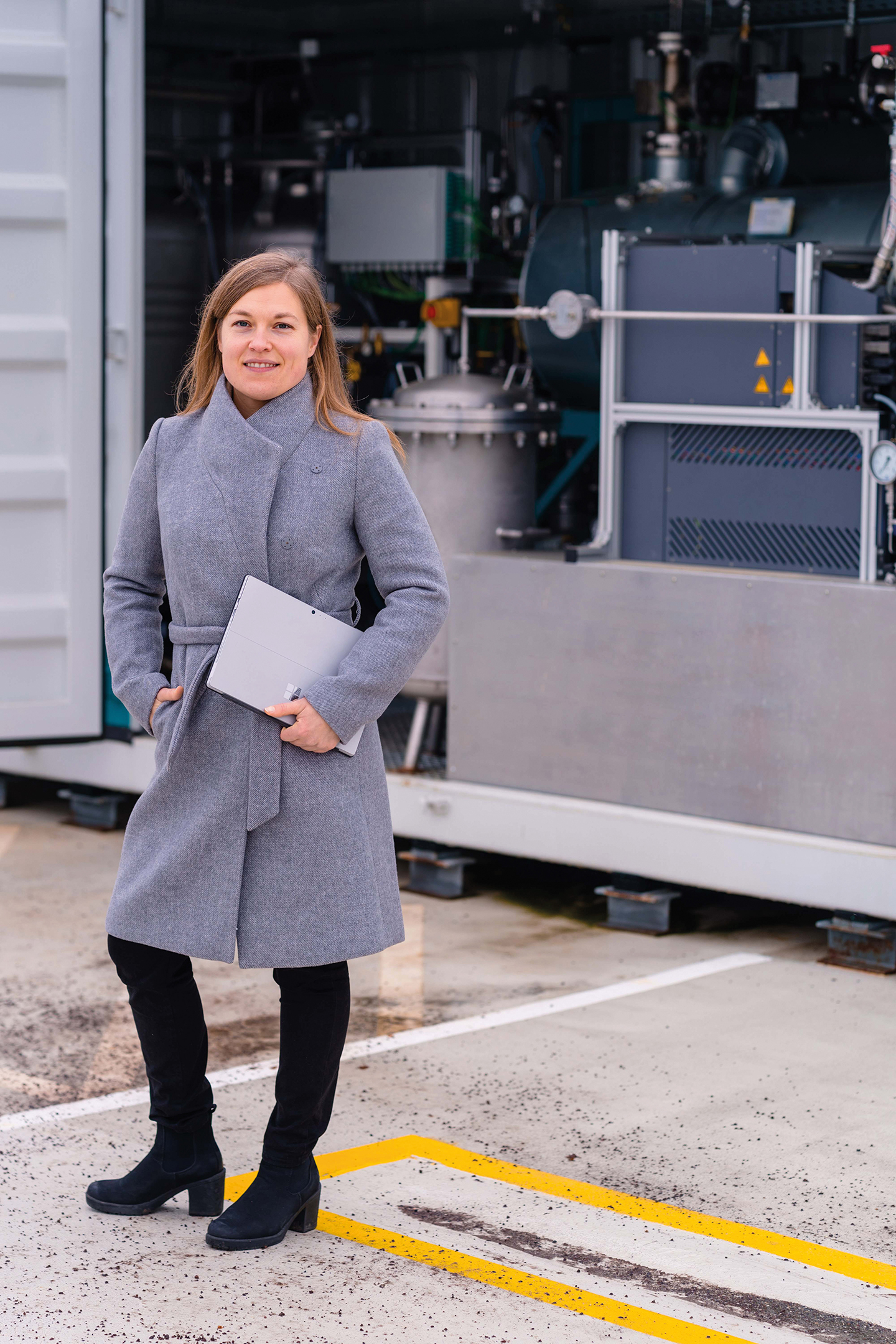Green energy as a business model

Dr. Anna-Lena Klingler believed in the potential of solar power back when the energy transition was no more than a distant prospect. Today, the environmental scientist is working on the expansion of renewable energy sources in Germany.
Dr. Klingler was still at school when she first came up with the idea: Together with a classmate, she wanted to invent a liquid solar cell that could be sprayed onto bricks like paint. When this special coating dried, the nanoparticles within would combine and current could flow. Every house wall — any wall in fact — could become a mini power plant. “From a technical perspective, the idea was not fully developed,” says Klingler smiling. However, she was not discouraged and remained resolute in her decision to study renewable energies at university.
The researcher grew up in the countryside and her family had a large garden with fruit trees and vegetable beds. So when the first photovoltaic systems came onto the market, it was not long before one was on the roof of her parent’s house. “Sustainability was an important consideration for us — and therefore became an interest of mine from very early on,” says Klingler. After school, she studied environmental sciences, specializing in energy technology, at the University of Bayreuth and the Federal University of Santa Catarina (UFSC) in Florianópolis, Brazil. In 2018, she gained her doctorate from the Technical University of Munich (TUM), with a thesis on the topic of “Decentralized energy supply for households.” As part of her PhD, she studied the benefits of photovoltaic and battery storage systems, and discovered using simulations that widespread battery storage systems at that time were not really economically viable.
Are renewable energies just an idealistic dream then? For Klingler, it was clear that more research was needed to make the technology marketable. For almost six years, she worked on energy technologies and systems at the Fraunhofer Institute for Systems and Innovation Research ISI. Three years ago, she transferred to Fraunhofer IAO, where she now heads the Energy Innovation team in the Smart Energy and Mobility Solutions research unit. Her team’s objective is to develop business models in the fields of electromobility, charging infrastructures and energy systems, supporting both businesses and municipal stakeholders who want to implement these models.
Anyone who works with renewable energies must always think of the bigger picture, because everything is interconnected. And Anna-Lena Klingler is someone who can keep many plates spinning at the same time. For example, she brings together researchers and companies to work on specific energy solutions for the future as part of the “Climate-Neutral Companies” innovation network. In another project, she and her colleagues are exploring what it takes to electrify long-distance truck transportation: How many high-power charging points would be needed and where? How many trucks could be charged at the same time at one charging point? Where would the energy come from? Would e-trucks be accepted or are other fuels the way forward?
One element that offers many answers to questions surrounding a sustainable future is “H2” — otherwise known as hydrogen. It is formed by splitting water into its component elements, hydrogen and oxygen. This is done using electricity from renewable energy sources, which is why this hydrogen is known as “green hydrogen”. As a zero-emission energy source, it has an important role to play in climate protection.
Klingler and her team are therefore also researching the possibility of a sustainable hydrogen economy in Baden-Württemberg and what this might look like — always keeping the following questions at the forefront of their research: What is feasible? And: Will citizens accept “green hydrogen” as an energy source? Almost 20 years after she first wanted to develop “liquid solar cells” as a school pupil, Klingler is now well on the way to realizing her childhood dream of contributing to a sustainable future.